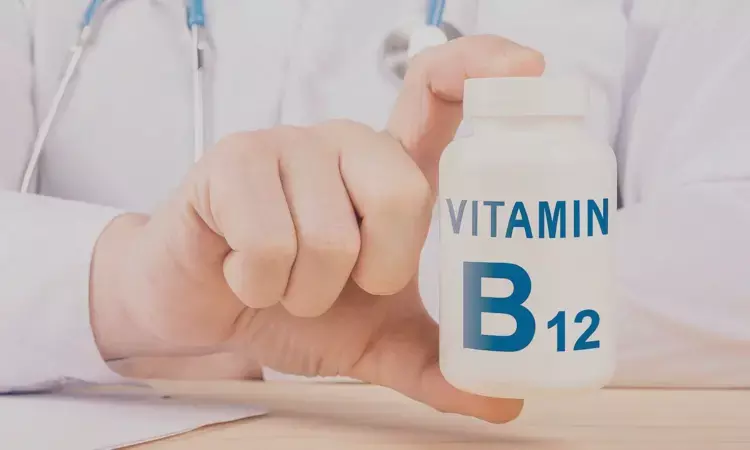- Home
- Medical news & Guidelines
- Anesthesiology
- Cardiology and CTVS
- Critical Care
- Dentistry
- Dermatology
- Diabetes and Endocrinology
- ENT
- Gastroenterology
- Medicine
- Nephrology
- Neurology
- Obstretics-Gynaecology
- Oncology
- Ophthalmology
- Orthopaedics
- Pediatrics-Neonatology
- Psychiatry
- Pulmonology
- Radiology
- Surgery
- Urology
- Laboratory Medicine
- Diet
- Nursing
- Paramedical
- Physiotherapy
- Health news
- Fact Check
- Bone Health Fact Check
- Brain Health Fact Check
- Cancer Related Fact Check
- Child Care Fact Check
- Dental and oral health fact check
- Diabetes and metabolic health fact check
- Diet and Nutrition Fact Check
- Eye and ENT Care Fact Check
- Fitness fact check
- Gut health fact check
- Heart health fact check
- Kidney health fact check
- Medical education fact check
- Men's health fact check
- Respiratory fact check
- Skin and hair care fact check
- Vaccine and Immunization fact check
- Women's health fact check
- AYUSH
- State News
- Andaman and Nicobar Islands
- Andhra Pradesh
- Arunachal Pradesh
- Assam
- Bihar
- Chandigarh
- Chattisgarh
- Dadra and Nagar Haveli
- Daman and Diu
- Delhi
- Goa
- Gujarat
- Haryana
- Himachal Pradesh
- Jammu & Kashmir
- Jharkhand
- Karnataka
- Kerala
- Ladakh
- Lakshadweep
- Madhya Pradesh
- Maharashtra
- Manipur
- Meghalaya
- Mizoram
- Nagaland
- Odisha
- Puducherry
- Punjab
- Rajasthan
- Sikkim
- Tamil Nadu
- Telangana
- Tripura
- Uttar Pradesh
- Uttrakhand
- West Bengal
- Medical Education
- Industry
New Rural Strategy Combats B12 Deficiency: Symptom-Based Diagnosis and Vitamin Powder Supplementation

INDIA: In rural areas of India, where healthcare access is often limited, a novel method for diagnosing and treating cyanocobalamin (vitamin B12) deficiency is making a significant impact.
A recent study published in the Journal of The Association of Physicians of India revealed that in rural areas where laboratory tests are often unavailable, identifying B12 deficiency through clinical signs and symptoms proves valuable. Adding vitamin powder directly to cooked food, much like how table salt is used, has been shown to effectively improve blood vitamin levels.
Anemia is a condition in which the number of red blood cells or hemoglobin concentration within them is lower than normal. The primary causes of anemia include iron deficiency, as well as deficiencies in folate, vitamin B12, and vitamin A. Pernicious anemia, an autoimmune condition, results from the impaired absorption of vitamin B12, leading to its deficiency. This deficiency then causes megaloblastic anemia. The risk factors associated with pernicious anemia include adverse pregnancy outcomes, fatigue, impaired growth and development, a heightened susceptibility to infections, and an increased risk of death. Considering this, Himmatrao Saluba Bawaskar, et al conducted a study to assess the clinical signs and symptoms to detect Vitamin B12 deficiency.
For this purpose, the research team investigated the dietary habits of the population. They also studied the B12 content of fish, three different types of meat precooked and post-cooked, crab( gray-white ) and black, washed and unwashed vegetables, homemade curd and commercially packed curd. To conduct the research, the researchers included 1,992 suspected cases, which included 49.3% males and 50.7% females. All of them were having two or more signs and symptoms of Vitamin B12 deficiency.
They found the following results: -
· Among the cases studied, 945 (49.94%) were strict vegetarians, 999 (50.17%) followed a mixed vegetarian and non-vegetarian diet, and 48 (2.40%) were strict non-vegetarians.
· The most common occupations associated with vitamin B12 deficiency were housewives (666 cases, 33.4%), service workers (396 cases, 19.9%), businesspeople (316 cases, 15.9%), retirees (180 cases, 9%), and industrial workers (198 cases, 9.9%).
Clinical symptoms observed included recurrent scalp hair loss in 268 patients (13.5%), poor memory in 240 patients (12%), tingling and numbness in 200 patients (10%), and generalized weakness in 387 patients (19.4%). Additionally, 541 patients (27.15%) exhibited pigmentation in the nail beds, knuckles, oral mucosa, and tongue, while 237 patients (10.81%) had hypertension and ischemic heart disease.
A total of 365 cases (18.32%) had vitamin B12 levels below 190 µg/mL (with normal levels being above 190 µg/mL). Mean corpuscular volume (MCV) was greater than 100 in 31 cases (1.6%). Furthermore, 73 cases (3.66%) had serum homocysteine levels exceeding 11.
“Early detection of Vitamin B12 helps to prevent the occurrence of anemia. With proper diet management and the incorporation of vitamins, a balanced diet can cure anemia. Regular monitoring, detection, intervention, and preventive measures help to manage B12 deficiency”, researchers concluded.
Reference
Bawaskar, H. S., Bawaskar, P. H., & Jadhav, V. L. B. (2024). Diagnostic signs and symptoms of cyanocobalamin deficiency at rural setting in India: Novel method of supplementation. Journal of The Association of Physicians of India, Volume 72, Issue 8, P30-35, August - 2024 https://www.japi.org/article/japi-72-8-30
Deepanshi Bhatnagar (MSc Nutrition and Dietetics) is a professional with a master's degree in Nutrition and Dietetics from MRIIRS. With a strong academic background, she is well-versed in the principles of nutrition and dietary science. At Medical Dialogues, Deepanshi serves as the correspondent for fact-checking, where she is responsible for verifying and evaluating claims related to nutrition and diet, ensuring that all content is accurate, evidence-based, and scientifically sound.
Dr Kamal Kant Kohli-MBBS, DTCD- a chest specialist with more than 30 years of practice and a flair for writing clinical articles, Dr Kamal Kant Kohli joined Medical Dialogues as a Chief Editor of Medical News. Besides writing articles, as an editor, he proofreads and verifies all the medical content published on Medical Dialogues including those coming from journals, studies,medical conferences,guidelines etc. Email: drkohli@medicaldialogues.in. Contact no. 011-43720751


